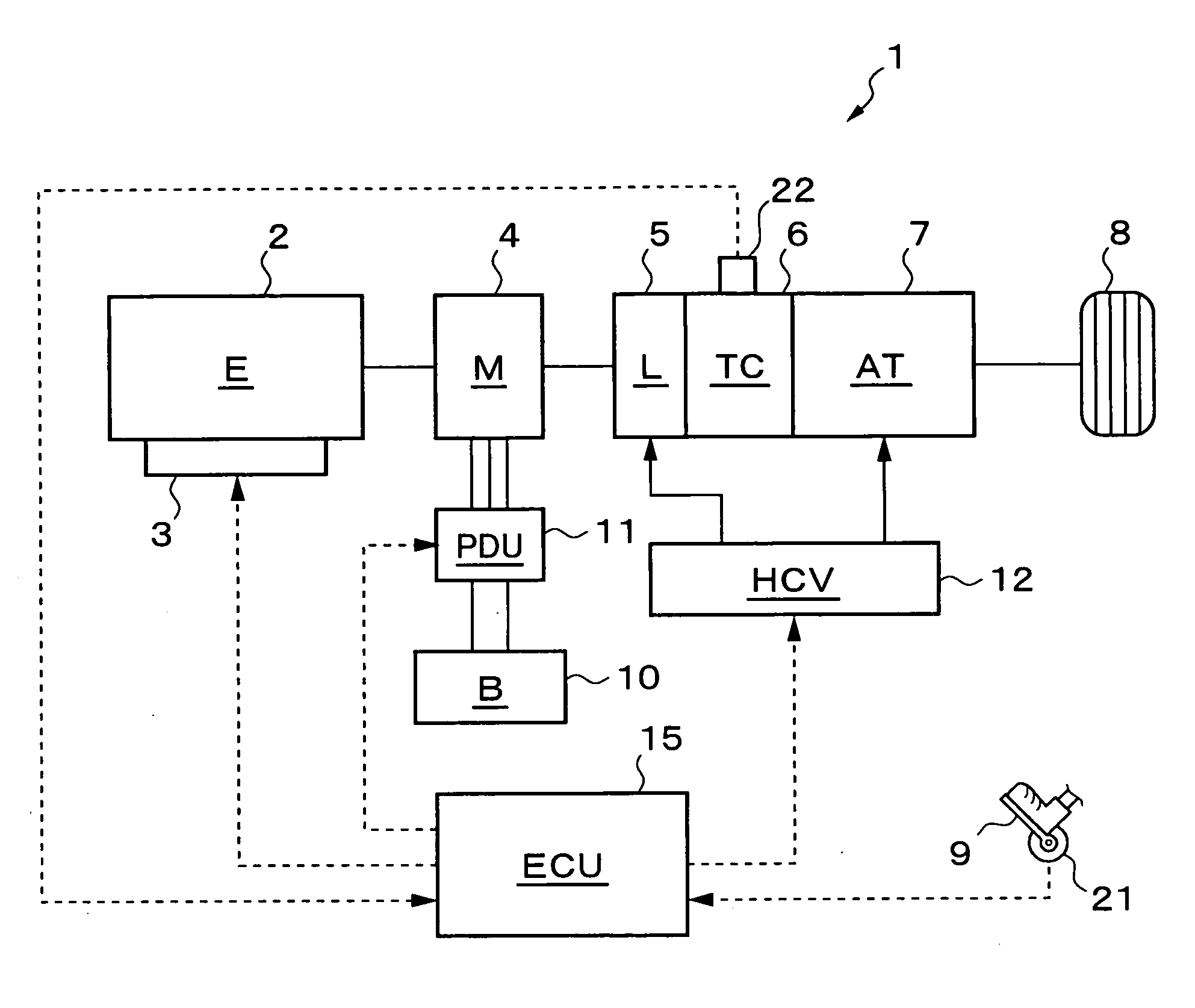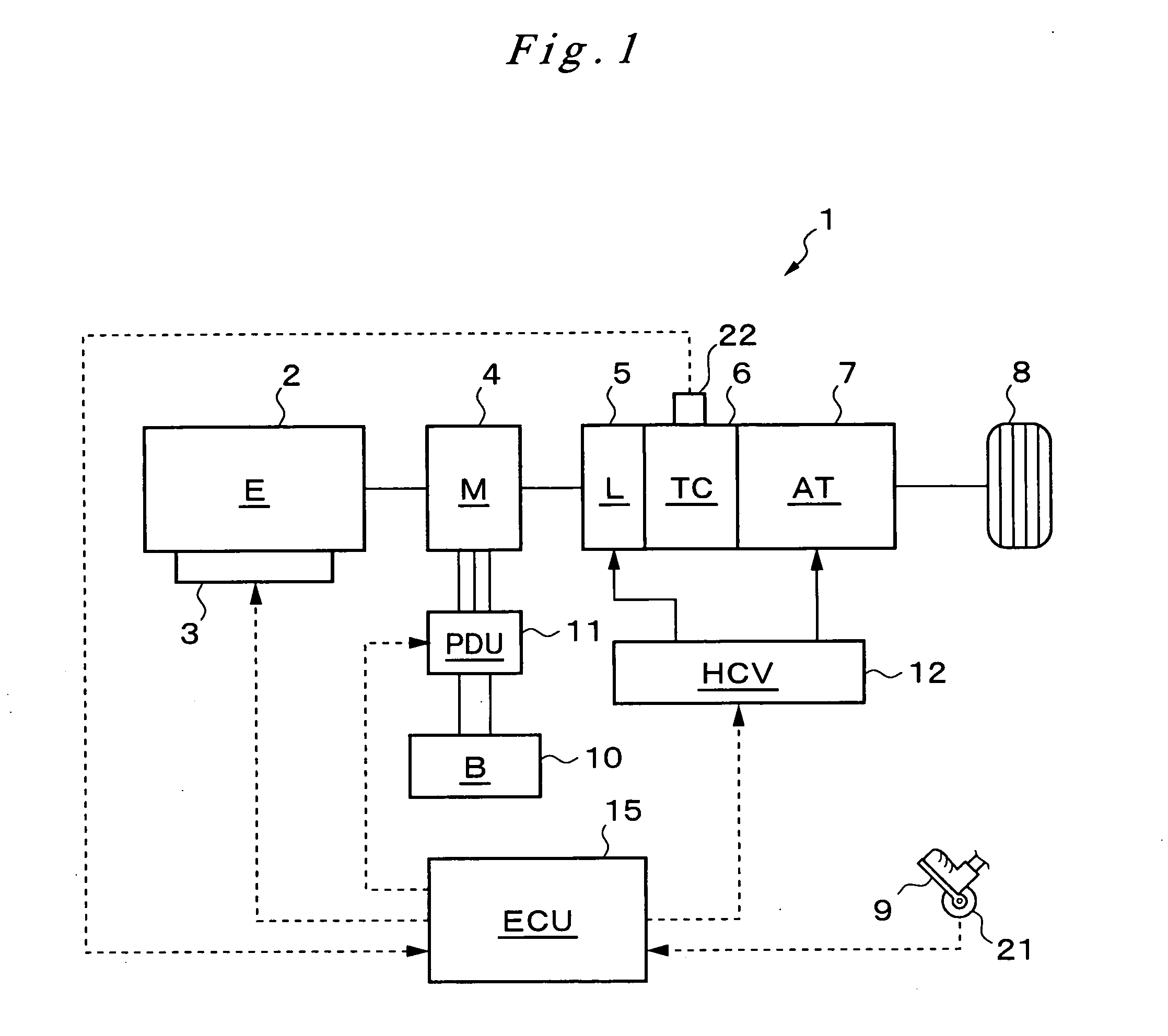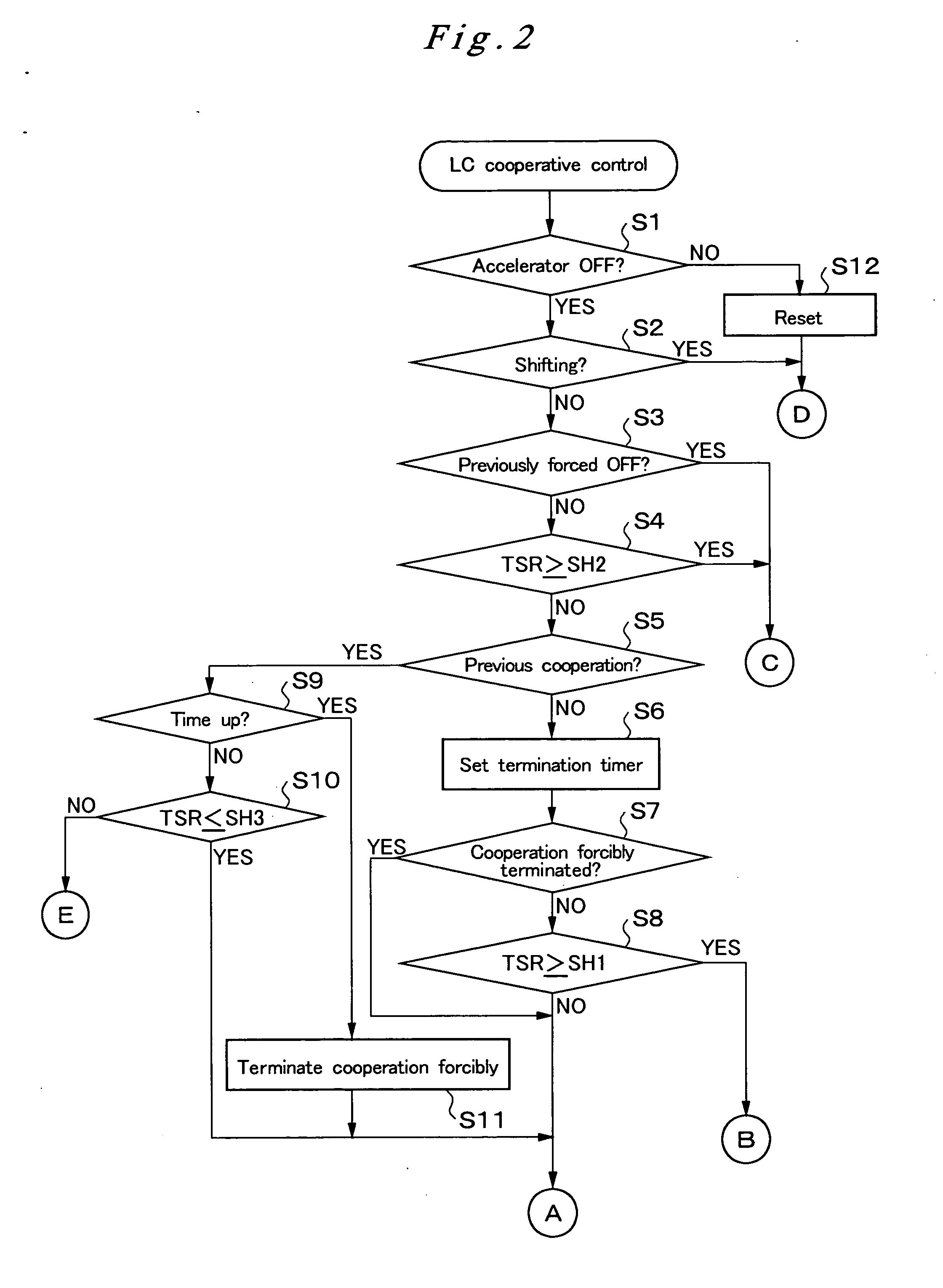Control system for hybrid vehicle
a control system and hybrid technology, applied in the field of hybrid vehicles, can solve the problems of low efficiency in energy regeneration, low efficiency in engine brake assistance, low transmission efficiency, etc., and achieve the effect of reducing electric power consumption
- Summary
- Abstract
- Description
- Claims
- Application Information
AI Technical Summary
Benefits of technology
Problems solved by technology
Method used
Image
Examples
example 1
[0074] In the first example, which is shown in FIG. 5, when the accelerator is judged as being off at time t1, no shifting is being executed, and no forced release of the lock-up clutch has been executed recently. For this situation, the control flow shown in FIG. 2 proceeds from step S1 to step S2 and step S3 to step S4. In this instance, the engine rotational speed Ne (=the input rotational speed of the torque converter Nti) is higher than the rotational speed Nm of the input shaft of the transmission (=the output rotational speed Nto of the torque converter) as shown in (B). Therefore, the slip ratio TSR of the torque converter 6 is smaller than 100%, and TSR2 (with SH2=120%) as shown in (C). As a result, the control flow proceeds to step S5.
[0075] In addition, no cooperative operation has been executed recently, and no forced termination of the cooperative operation has been executed recently. As a result, the control flow proceeds from step S5 to step S6, where the termination...
example 2
[0079]FIG. 6 shows a second example. In this example, the conditions at time t1 are the same as the first example, so the control flow proceeds to step S14 and to step S15, where the deceleration lock-up control is initiated without execution of the cooperative operation of the motor generator 4. As a result, the lock-up clutch control pressure PLC, which is supplied to the lock-up clutch 5, is increased at time t1 and thereafter as shown in (D), for starting the control of bringing the lock-up clutch 5 into engagement. Because the accelerator is turned off, the rotational speed Ne of the engine decreases greatly beyond the rotational speed Nm of the input shaft of the transmission, and the slip ratio TSR increases above the first threshold value SH1 at time t2 as shown in (C).
[0080] Therefore, the control flow proceeds from step S8 to step S16 and to step S17, where the cooperative lock-up control is executed, and the cooperative operation of the motor generator 4 is executed. In ...
example 3
[0083]FIG. 7 shows a third example. Also in this example, the conditions at time t1 are the same as the first example, so the control flow proceeds to step S14 and to step S15, where the deceleration lock-up control is initiated without execution of the cooperative operation control of the motor generator 4. As a result, the lock-up clutch control pressure PLC, which is supplied to the lock-up clutch 5, is increased at time t1 and thereafter as shown in (D), for starting the control of bringing the lock-up clutch 5 into engagement. Because the accelerator is turned off, the rotational speed of the engine decreases greatly beyond the rotational speed Nm of the input shaft of the transmission, and the slip ratio TSR increases above the first threshold value SH1 at time t2 as shown in (C).
[0084] Therefore, the control flow proceeds from step S8 to step S16 and to step S17, where the cooperative lock-up control is executed, and the cooperative operation of the motor generator 4 is exec...
PUM
 Login to View More
Login to View More Abstract
Description
Claims
Application Information
 Login to View More
Login to View More - R&D
- Intellectual Property
- Life Sciences
- Materials
- Tech Scout
- Unparalleled Data Quality
- Higher Quality Content
- 60% Fewer Hallucinations
Browse by: Latest US Patents, China's latest patents, Technical Efficacy Thesaurus, Application Domain, Technology Topic, Popular Technical Reports.
© 2025 PatSnap. All rights reserved.Legal|Privacy policy|Modern Slavery Act Transparency Statement|Sitemap|About US| Contact US: help@patsnap.com



